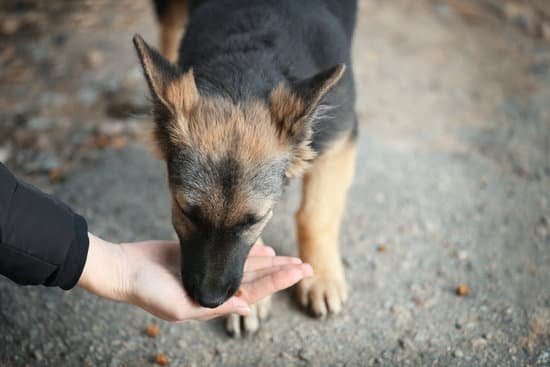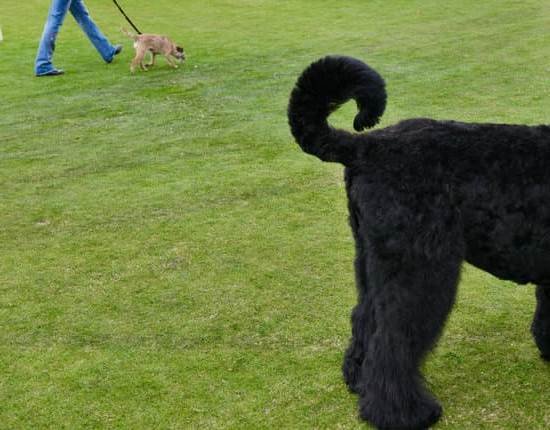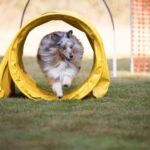Introduction
A dog ramp can be a fantastic tool for both teaching your puppy how to climb and descend as well as providing safe access when they’re an adult. Ramps can be used outside, inside and in caravans and swimming pools, giving your dog safe access in and out of elevated areas. Benefits for using a dog ramp include avoiding back or joint injuries, reduced strain on joints, building confidence and preventing slips or falls.
Training Process – How to Begin Safely
It’s important to introduce ramps slowly with the correct training methods. Firstly, set up the ramp so as to minimize any potential worries from your pup; attach it correctly and use a non-slippery matting at the top of the ramp so that your pup has traction where it leaves the ramp. You may also choose to apply anti-slip tape along the entrance and exit points of the ramp itself.
Once you have finished setting up the ramp, encourage your pup onto it by having them sit up nice and tall before you offer some verbal commands – use simple words such as ‘up’ or ‘top’ – while you gesture towards the upper part of the ramp they should ascend. If they run up without being asked then simply stand still which will signal that you don’t want this behaviour and make them stop so you can start again from a sitting position. Your aim is for them to move slowly, calmly and confidently up into position each time with minimal stress involved.
Once you have built confidence, practice going down too by stairs/steps/ blocks (cardboard if available). By this point your pooch should be comfortable enough with ascending that they won’t need pressing to go down too – but always make sure to give supportive words while they do it! And again reward with vocal praise or treats whenever you are able – consistency is key!
Continue practicing in various places until they learn how to do this safely and securely on their own. It might take several weeks but eventually he/she will get better at it and won’t feel so scared of new places (or items like furniture) any longer.* Always remember patience + rewards = happy pup!
Choosing the Right Ramp for Your Dog
When it comes to training a dog to use a ramp, it is important to carefully select the right ramp for your pet. There are several different options available, so you will want to explore those in order to find the right one for your pup. The most important factor to consider is the size of the ramp and how it is going to fit into or attach to whatever piece of furniture you are using. You will also want to assess how safe the ramp is, and make sure that it has enough space for the dog’s paws and tail while they climb up or down. To ensure your pup’s safety, you will also want to consider what material or surface the ramp is made out of. Ramps can be covered with a variety of materials such as rubber, carpeting, non-skid vinyl, or mesh fabric – all of which could be beneficial in helping protect your pup’s paws while they navigate up or down their new path. Additionally, ramps come at different heights and gradients – depending on where they need to attach and how your pup manages going up and down them. Consider all these factors carefully when selecting the perfect ramp solution for your four-legged friend!
Preparing Your Dog for Training
Establishing a Calm Environment: When it comes to training your dog, creating an environment that is free of distractions is key. Put away any toys they may be interested in, turn off the TV, and make sure other family members are quiet during the session. If their energy levels are high, take them on a short walk beforehand so they can have a chance to get rid of some energy before starting their training session.
Establishing Yourself as Leader: Establish yourself as the leader in your relationship with your dog by being consistent with expectations and providing rewards for good behavior. Make sure you set boundaries and expectations before you begin working with your pup on the ramp while also making sure to follow through when commands or expectations are not met.
Creating Rapport with Your Dog: To create rapport with your pup, engage in positive reinforcement training at first. Talk softly to them and reward behavior such as sitting nicely when asked or approaching the ramp without hesitation. Don’t expect too much from them too soon; instead, focus on instilling comfort and trust by praising every correct action or behavior that is displayed throughout the training process – this will encourage them more than anything!
Practicing with the Ramp
Practicing with the Ramp: Before you begin to use the ramp, it’s important that your dog knows it is safe. Start by bringing your pup next to the ramp and allowing them to explore and get used to it. If they seem excited and curious, offer treats while they sniff and touch the surface of the ramp. Don’t rush them into performing any behaviors yet, just let them observe and get familiar with it in their own time.
Providing Positive Reinforcement with Treats: Once your dog is used to being around the ramp, you can start encouraging them to interact with it more proactively. Take a few treats and hold one at a time in between two fingers so that your pup can see it. Move your hand up along the length of the ramp and encourage your pup to follow your hand towards the top with an almost cat-like stride (a waggle of their tail!) as soon as they do, drop the treat on top for them to get! After doing this a few times, you can gradually put more distance between yourself and the dog so that eventually, each focal movement from you marks a behavior from them-then reward accordingly!
Building up Distance and Duration: As your pup gets used to walking or running up and down on their own signal, you can start building up duration on tasks and putting more distance between yourself and the task which will eventually become vital if (for example) they ever need assistance going over stairs or onto furniture! Keep rewarding every successful completion within higher distances until you are confident that your pup knows how best to use their new tool – voila!
Instilling the Behavior
Instilling the Behavior: In order to ensure that your dog/pup understands and follows your commands regarding the ramp, begin by providing reward-based positive reinforcement. Offer special treats and plenty of verbal praise as you guide your pup up the ramp. It’s also important to make them comfortable with the ramp itself. Allow them to explore it on their own, examining the surface, learning how it slopes and dips, etc. Whenever your pup makes contact with the ramp (interacting or stepping onto it) offer more reward-based reinforcement such as treats or verbal affirmations.
Making Use of the Ramp a Daily Routine: Once your pup is comfortable with its presence, implement steps to make it into a daily routine whenever they need to climb/descend from surfaces they cannot access on their own. Start by setting realistic goals—perhaps beginning with just a few steps up at first until they become more confident and accustomed. Ask them to reach small milestones and reward them for each successful step towards using the ramp properly and confidently every day. Over time you can gradually increase both difficulty (height of jump) and goal completion frequency (adding as part of morning walks).
Dealing with Challenges Along the Way: Dog training routes almost invariably require patience and endurance. Be understanding if your pup shows signs of hesitation or fatigue–record their progress but cut back if needed or move on to another task that they are already adept at so they don’t get discouraged entirely! Also remember that there will be good days where progress happens very quickly and bad days where even gradual progress seems like a herculean effort; try not overwork them (and yourself).
Tips for Maintaining Long-term Training: As you observe your pup negotiating obstacles successfully when out on walks start counting their successes in terms sound repetitions rather than treat repetition for each successful step up/down taken via the helpful aid of ramps only works slower in producing results over time compared to those who rely upon constant affable reinforcement such as treats or verbal gratifications after showing excellent consistency on any given task so be sure frequently remind & reinforce accordingly too!. Additionally going out for holiday strolls featuring unique pathways can also help keep things fresh & exciting which makes retaining important behaviours more likely so feel free inspired go outside boundaries whenever possible!
Conclusion
Once you have selected the appropriate ramp for your dog, you are ready to get started on training. With any type of animal training, patience is key. Start by having your dog stand in an area where the ramp can be easily accessed. The next step is to use positive reinforcement whenever your pup takes a few steps onto the ramp. Once your dog is comfortable walking onto the surface of the ramp up close, gradual increase their distance before they make any attempts to walk up it. To help with motivation, reward your pooch with treats and lots of affection every time they succeed in taking a few steps up the ramp. When they become more familiar and confident with walking up the ramp even without encouragement from you, it’s time to introduce a cue command so that you can ensure consistency as well as help them respond quickly when necessary. With consistent practice and repetition your pup will eventually learn how to use the ramp with ease.

Welcome to the blog! I am a professional dog trainer and have been working with dogs for many years. In this blog, I will be discussing various topics related to dog training, including tips, tricks, and advice. I hope you find this information helpful and informative. Thanks for reading!





